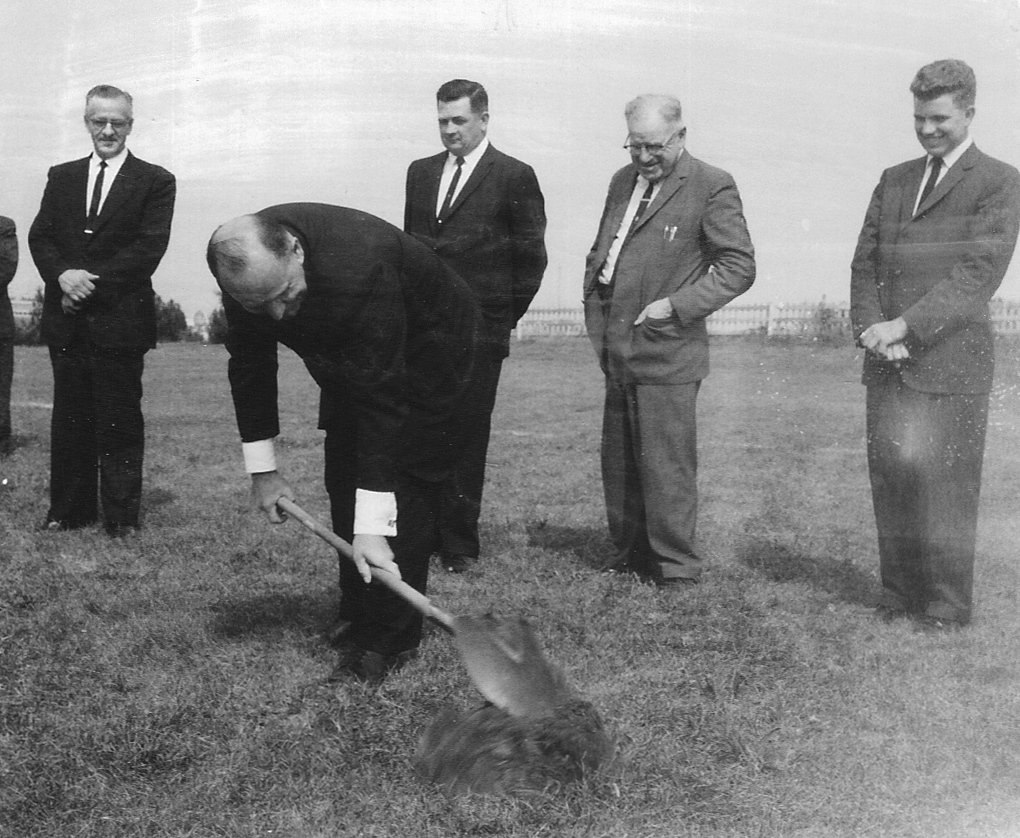
Today’s Photo Friday depicts an understudied — yet vitally important — aspect of Brethren in Christ religious life in the 1960s and 1970s: the Church Growth movement.
After the jump: the Skyline View congregation as a case study in the Brethren in Christ adopting of Church Growth methodology.
Church Growth developed as a phenomenon within the larger mid-twentieth century American neo-Evangelical movement. (This is the same variety of Evangelicalism that produced Billy Graham, Youth for Christ, Christianity Today, Fuller Theological Seminary, and World Vision, among other entities.) As UNC historian Molly Worthen writes in her new book Apostles of Reason: The Crisis of Authority in American Evangelicalism, the movement represents an evolution in Evangelical thinking on evangelism. While earlier twentieth century evangelistic methods — such as the crusade evangelism of Billy Graham, or the tract-centered ministry of Campus Crusade for Christ — focused exclusively on the individual, Church Growth advocates like Donald McGavran argued that souls could be won for the Kingdom en masse, by converting entire people groups or communities. To do this, however, the potential evangelist or pastor would have to inhabit the culture of the “target community” and preach the gospel using the idioms of that culture. In other words, to paraphrase the Apostle Paul, Church Growth advocates encouraged being “all things to all people.”
The Brethren in Christ adopted techniques from the Church Growth movement beginning in the 1960s and 1970s. This move had radical implications. Previously, the Brethren in Christ — like other American Anabaptist communities — had called converts to come out of the local culture, to be set apart as the church in distinctive ways that contrasted with the world around them. Now, Brethren in Christ pastors were entering into the local culture in order to win souls for Christ.
In my research, no story better embodies the ironies and complexities of Brethren in Christ adoption of Church Growth techniques than the story of John Arthur and Eva Brubaker and the Skyline View congregation. Raised in conservative Lancaster County, Pennsylvania, John Arthur was chosen by the denomination to serve as the church planting pastor of this new congregation in suburban Harrisburg. Up to this point in the early 1960s, both John Arthur and his wife, Eva, had practiced the distinctive “ways of the Brethren,” which included wearing plain dress. But in seeking to be “relevant” to the culture in which they were about to plant a church (which is good Church Growth thinking) the Brubakers made a decisive change. As John Arthur recalled in a 2011 interview, they sensed that “a distinctive attire might be a liability.” So John Arthur put on a necktie, Eva exchanged her head covering for a modest hat, and the two set about launching a suburban congregation among middle-class central Pennsylvanians.
As a historian, it’s not my role to comment on the theological significance of this shift. (I’ll leave that for people better suited to the challenge!) Instead, I’ll simply note that the Church Growth movement proved very successful among the Brethren in Christ, leading to the establishment of several new congregations within a relatively small window of time. And it clearly had some significant implications for the Brethren in Christ’s acculturation into mainstream American society. As I argue in my current research project, the church’s mid-century engagement with Evangelicalism at least in part helped them come to terms with their cultural transformation. Of course, it’s a lot more complicated than that — but I’ll save that for a future post!
In the meantime, consider today’s Photo Friday installment as a snapshot of a “plain people” in the midst of a seismic cultural transformation.

And next, you’ll need to read the bio. of my parents and their church-planting efforts in suburban Toronto in the early 60s! Similar experiences to be found there. And the BIC were totally unknown in Toronto, where the majority of protestants identified with mainline churches such as United Church of Canada, Anglican, and Presbyterian. It’s fun to be looking at experiences like Skyline View and others from a distance of 50 years.
Looking forward to it, Beth. As I noted, I’m including a section about church growth in my article “Born-Again Brethren in Christ,” so I’ll be interested to see what you’ve recorded about your parents’ church planting experiences in Toronto.